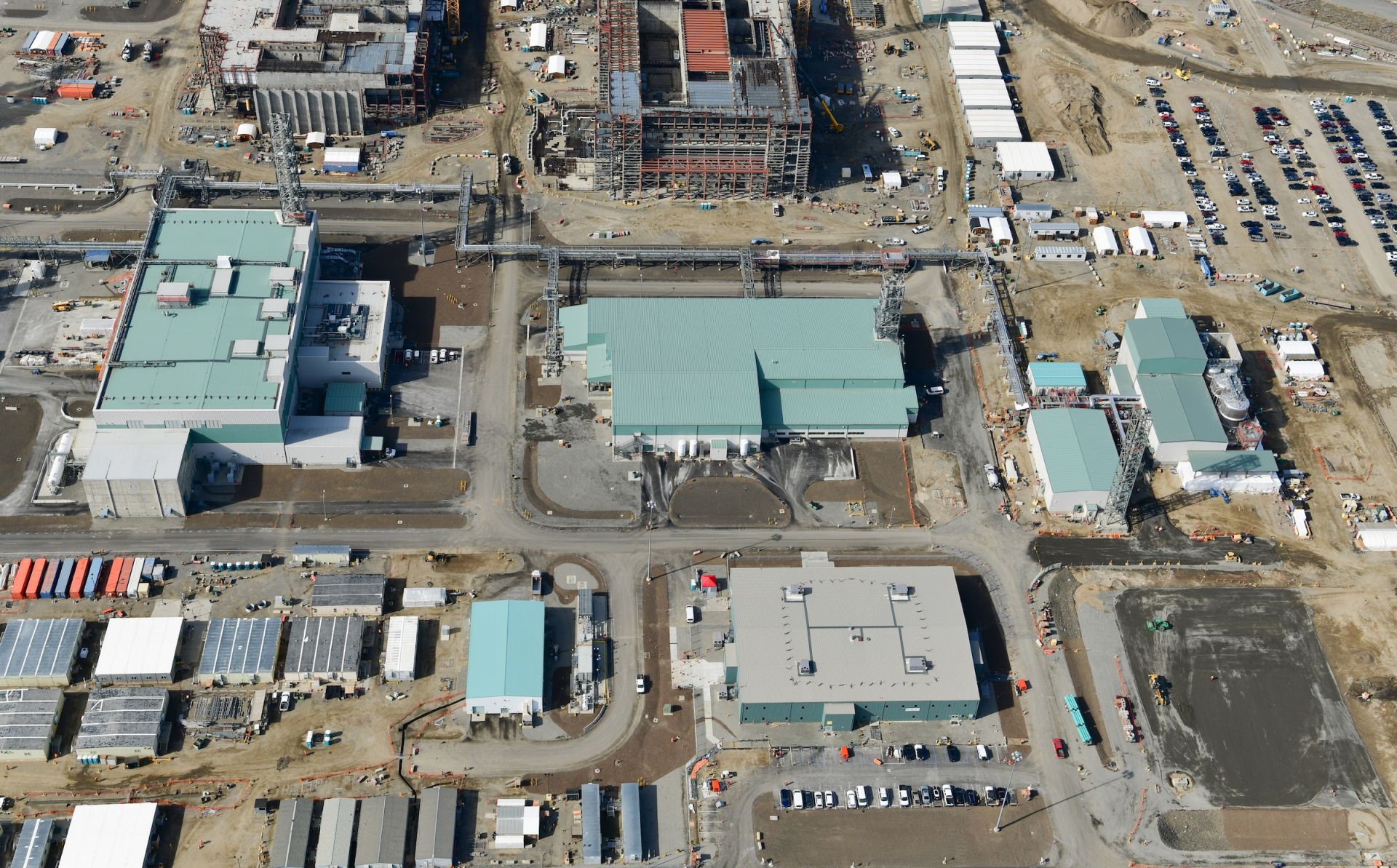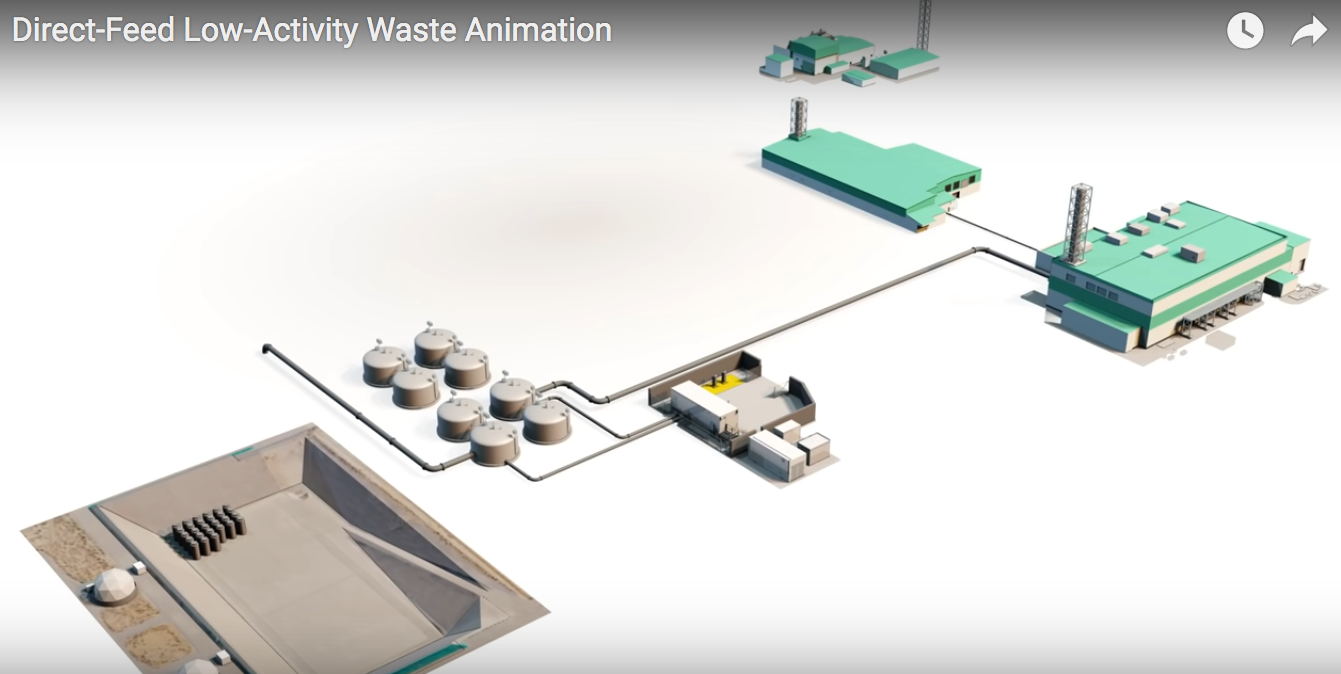An aerial view of Hanford’s Liquid Effluent Retention Facility Basin 44 with its new cover installed. (Photo: DOE)
Record-breaking heat and the vast size of the job did not stop the Department of Energy’s Office of River Protection and its tank operations contractor, Washington River Protection Solutions (WRPS), from completing a construction project critical to the Hanford Site’s Direct-Feed Low-Activity Waste program for treating radioactive tank waste.
LLNL and Penn State researchers developed a new approach to study and purify medical isotopes, including actinium. (Image: Thomas Reason/LLNL)
Scientists at Lawrence Livermore National Laboratory and Pennsylvania State University have demonstrated that a natural protein found bonded to rare earth elements can be recovered and used as a tool to purify and effectively manage radioactive metals that show promise for cancer therapy and the detection of illicit nuclear activities.
Hanford’s Waste Treatment and Immobilization Plant, also known as the Vit Plant. (Photo: Bechtel National)
The Department of Energy’s Office of Environmental Management (EM) has issued a final request for proposal (RFP) for the Hanford Integrated Tank Disposition Contract, a 10-year, $45 billion deal to oversee waste tank operations at the DOE’s Hanford Site near Richland, Wash. Proposals are due by December 20.
Vogtle-4 containment as it appeared last month. Photo: Georgia Power
In what has become for nuclear advocates an all-too-familiar refrain, Georgia Power has made another revision to the Vogtle nuclear expansion project schedule. The company now predicts a Unit 3 in-service date in the third quarter of 2022 and a Unit 4 in-service date in the second quarter of 2023, representing a three-month shift for each unit.
An F-35A Lightning II takes off from Eielson Air Force Base in Alaska on July 1, 2021. (Photo: U.S. Air Force/Airman 1st Class Jose Miguel T. Tamondong)
The Department of the Air Force has selected Eielson Air Force Base as the site of a stationary microreactor that “will provide the installation with a clean, reliable, and resilient nuclear energy supply technology for critical national security infrastructure,” the department announced on October 15.
Physicist Suying Jin with computer-generated images showing the properties of heat pulse propagation in plasma (Image: PPPL/Jin/Kiran Sudarsanan)
Researchers at the Department of Energy’s Princeton Plasma Physics Laboratory (PPPL) have developed a new model of how heat flows within plasmas. According to PPPL, the model could improve insights into the behavior of plasmas and may help engineers avoid the conditions that could lead to heat loss in future fusion facilities.
Limerick nuclear power plant. (Photo: Arturo Ramos)
The Department of Energy is providing $50 million in a cost-sharing project with Exelon Generation to digitalize the control room at the company’s Limerick nuclear power plant, the department announced yesterday. Once implemented, the facility will house the first fully digital safety system upgrade at a U.S. nuclear power plant.
The 100-BC Area (in green) within the Hanford Site. (Image: DOE)
Soil and groundwater contamination at the Hanford Site’s 100-BC Area will be treated under a record of decision (ROD) signed by the Department of Energy and the Environmental Protection Agency, with the concurrence of the Washington State Department of Ecology.
A screen shot from Hanford’s DFLAW animation. (Image: DOE)
The Department of Energy’s Office of Environmental Management (EM) has released an animated video of the Direct-Feed Low-Activity Waste (DFLAW) Program at the Hanford Site near Richland, Wash. The video shows the integrated procedure for treating Hanford’s radioactive tank waste, a process EM says is a key component of its strategic cleanup vision.
View the animation here.
In a virtual ceremony, CNL and KHNP signed a memorandum of understanding to cooperate on spent CANDU fuel research. (Image: CNL)
Canadian Nuclear Laboratories (CNL) and Korea Hydro and Nuclear Power (KHNP) intend to leverage data collected over decades on the dry storage of spent nuclear fuel to help inform decision-making on future spent fuel storage, transportation, and disposal activities.
Flags in front of the European Commission building in Brussels. (Image: Sébastien Bertrand)
Sixteen ministers from 10 European Union member states argue for adding nuclear energy to the EU taxonomy in a joint letter published last week in leading European newspapers and sent to the European Commission.



 “The price of anti-nuclear psychosis (for that is what it is) will be paid by vulnerable countries and future generations who suffer the escalating damages of climate breakdown,” writes environmentalist and author Mark Lynas in the foreword to a new study,
“The price of anti-nuclear psychosis (for that is what it is) will be paid by vulnerable countries and future generations who suffer the escalating damages of climate breakdown,” writes environmentalist and author Mark Lynas in the foreword to a new study, 







 within the Hanford Site.png)

 Doubtless with the intention of influencing some of the many nuclear agnostics expected at next week’s COP26 Climate Change Conference in Glasgow, the International Atomic Energy Agency last week released
Doubtless with the intention of influencing some of the many nuclear agnostics expected at next week’s COP26 Climate Change Conference in Glasgow, the International Atomic Energy Agency last week released 



